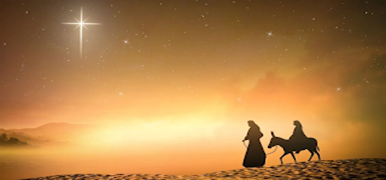| (Copyright 12-12-2024) by Eddie Hyatt (Grapevine, Texas) |
|---|
 Of the four Gospels, Luke gives the most detailed account of the Nativity and mentions Mary 12 times, more than any other biblical writer. In addition to the birth of Christ, he also gives special, detailed attention to the birth of John the Baptist and many see his gynecological interests to be a result of his training as a physician. The agnostic Oxford professor and archaeologist, Sir William Ramsay, thought he would scientifically prove Luke to be a bogus, unreliable writer by retracing Luke’s account of Paul’s travels in Acts. However, after years of retracing Luke’s account of Paul’s travels and doing archaeological excavations along the way, Ramsay completely reversed his view of the Bible and first-century history. He Sets Out to Disprove Luke Ramsay, considered one of the greatest archaeologists of all time, was a product of the skeptical, German higher criticism of the 19th century. According to these critics, the New Testament was written in the second century by individuals far removed from the events described and, therefore, filled with inaccuracies, myths, and legends. Ramsay set out to prove these theories, which he taught and had become accepted as facts in much of academia. However, after many years of archaeological research he became convinced that Acts was written in the first century by Luke, the traditional author, and he acquired a very high regard for Luke as a historian. He wrote, Luke is a historian of the first rank; not merely are his statements of fact trustworthy, he is possessed of the true historic sense; in short, this author should be placed along with the greatest of historians (Hyatt, Christmas is for Real, 10-11). In 1896, Ramsay began publishing his discoveries in a book entitled St. Paul the Traveler and the Roman Citizen. The book caused a furor of dismay among the skeptics of the world, for its affirmation of the biblical record was totally unexpected. The evidence was, in fact, so overwhelming that many atheists gave up their atheism and embraced Christianity. Over the next 20 years, Ramsay published other volumes showing how he discovered Luke to be accurate in the tiniest details of his account. In his book, The Bearing of Recent Discovery on the Trustworthiness of the New Testament, he wrote, “You may press the words of Luke in a degree beyond any other historian’s and they stand the keenest scrutiny and the hardest treatment” (Hyatt, Christmas is for Real, 11). To cite just one example, Luke’s use of the term “politarch” to describe officials in Thessalonica was widely considered to be a bogus term since it was unknown in all other ancient literature. But in his archaeological excavations, Ramsay uncovered the term no less than five times in ancient carvings in the city, demonstrating beyond doubt the authenticity and reliability of Luke’s authorship. The evidence piled up and became overwhelming. Ramsay eventually gave up his agnosticism and came to faith in Christ. He concluded that if Luke was this careful to get right the most minute facts about words, dates, roads, waterways, and different cultures, then he could also be trusted to have gotten his facts right about the supernatural things he described such as the Virgin Birth. Indeed, at the beginning of his Gospel, and just before describing the angel’s visit to Mary, Luke says that he has utilized eyewitness accounts of the events described. The detail Luke presents about the Virgin Birth does indicate that he has derived his information from a primary source, either Mary herself or someone to whom Mary had relayed the intimate details of the event. Conclusion of the Matter The famous Oxford historian, A.N. Sherwin-White, carefully examined Luke’s references to 32 countries, 54 cities, and nine islands, finding not a single mistake. The noted New Testament scholar, F.F. Bruce, noted that where Luke has been suspected of inaccuracy by modern critics, archaeology has again and again proven Luke to be right and the critics wrong. The evidence begs the question that if Luke was this careful to get his facts right about names, places, events and dates, can we not be confident that he was just as careful to get his facts right concerning the more important things about which he wrote, such as the Virgin Birth of Jesus Christ? Charles Wesley, the Anglican cleric and Methodist revivalist, believed so and wrote his magnificent hymn, “Hark the Herald Angels Sing,” after hearing London church bells ringing as he walked to church one Christmas day. He wrote, Hark the herald angels sing, Glory to the newborn king. Peace on earth and mercy mild, God and sinners reconciled. Joyful all ye nations rise, Join the triumph of the skies. With angelic hosts proclaim, Christ is born in Bethlehem. Editor’s Note: I have not read the book “Christmas is for Real” and I don’t plan to read it. Christmas is a pagan holiday and was not to be celebrated. What this article does is to give backup that there was a virgin birth and that the book of Luke is accurate and that should be the biggest take away from this article and that is why I decided to print it. Christ’s birth was near the time of the Feast of Tabernacles and not in the month of December. Laura Lee —————————————————————————————————- See Eddie Hyatt’s other articles at: Hyatt, Eddie – Church of God, Bismarck (church-of-god-bismarck.org) Reprinted with permission from: God’s Word to Women http://www.godswordtowomen.org/ —————————————————————————————————– |
Views: 2
Sign up to Receive [The "New" Church of God Messenger] weekly newsletter: